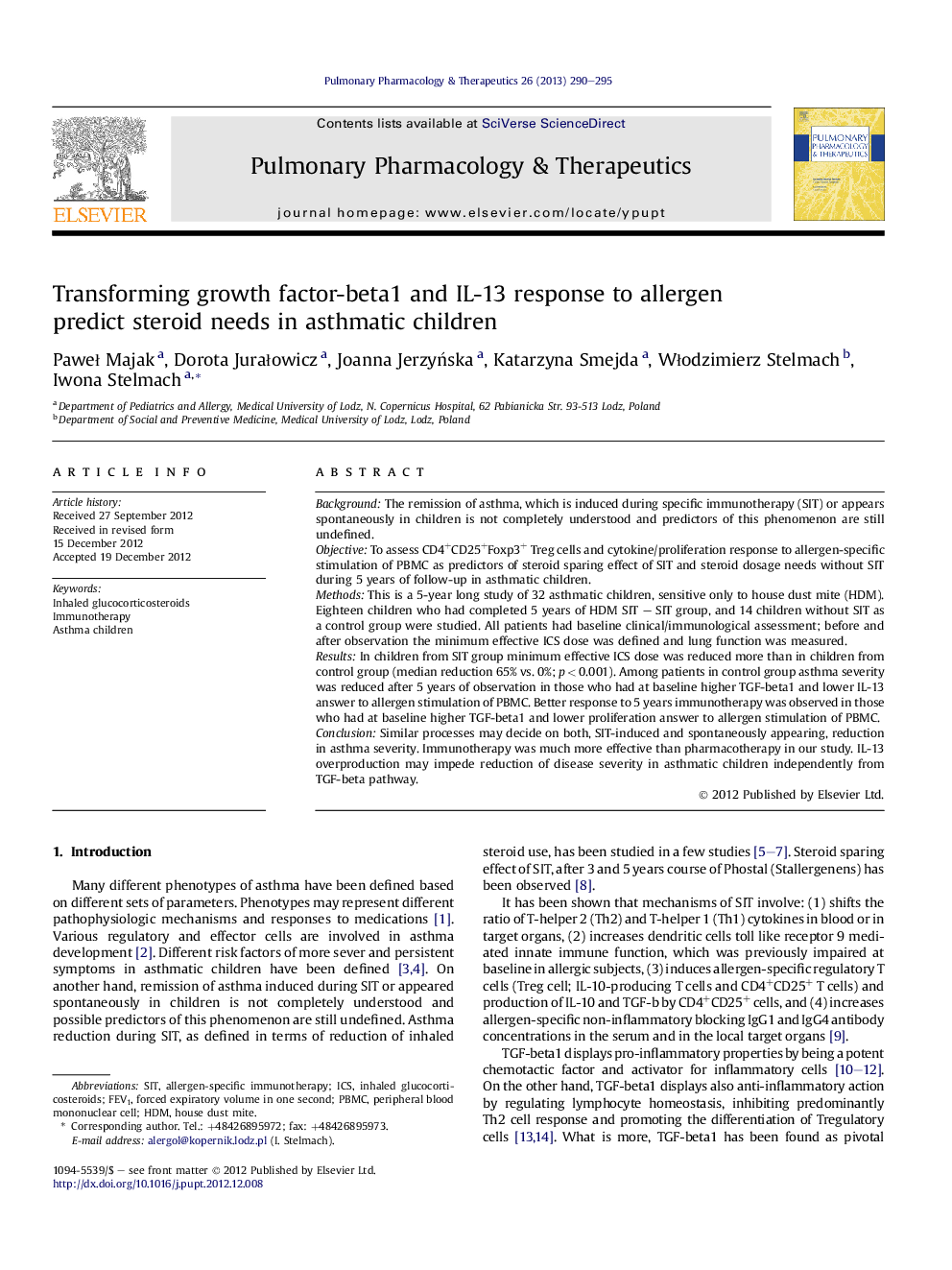| Article ID | Journal | Published Year | Pages | File Type |
|---|---|---|---|---|
| 2567051 | Pulmonary Pharmacology & Therapeutics | 2013 | 6 Pages |
BackgroundThe remission of asthma, which is induced during specific immunotherapy (SIT) or appears spontaneously in children is not completely understood and predictors of this phenomenon are still undefined.ObjectiveTo assess CD4+CD25+Foxp3+ Treg cells and cytokine/proliferation response to allergen-specific stimulation of PBMC as predictors of steroid sparing effect of SIT and steroid dosage needs without SIT during 5 years of follow-up in asthmatic children.MethodsThis is a 5-year long study of 32 asthmatic children, sensitive only to house dust mite (HDM). Eighteen children who had completed 5 years of HDM SIT – SIT group, and 14 children without SIT as a control group were studied. All patients had baseline clinical/immunological assessment; before and after observation the minimum effective ICS dose was defined and lung function was measured.ResultsIn children from SIT group minimum effective ICS dose was reduced more than in children from control group (median reduction 65% vs. 0%; p < 0.001). Among patients in control group asthma severity was reduced after 5 years of observation in those who had at baseline higher TGF-beta1 and lower IL-13 answer to allergen stimulation of PBMC. Better response to 5 years immunotherapy was observed in those who had at baseline higher TGF-beta1 and lower proliferation answer to allergen stimulation of PBMC.ConclusionSimilar processes may decide on both, SIT-induced and spontaneously appearing, reduction in asthma severity. Immunotherapy was much more effective than pharmacotherapy in our study. IL-13 overproduction may impede reduction of disease severity in asthmatic children independently from TGF-beta pathway.
